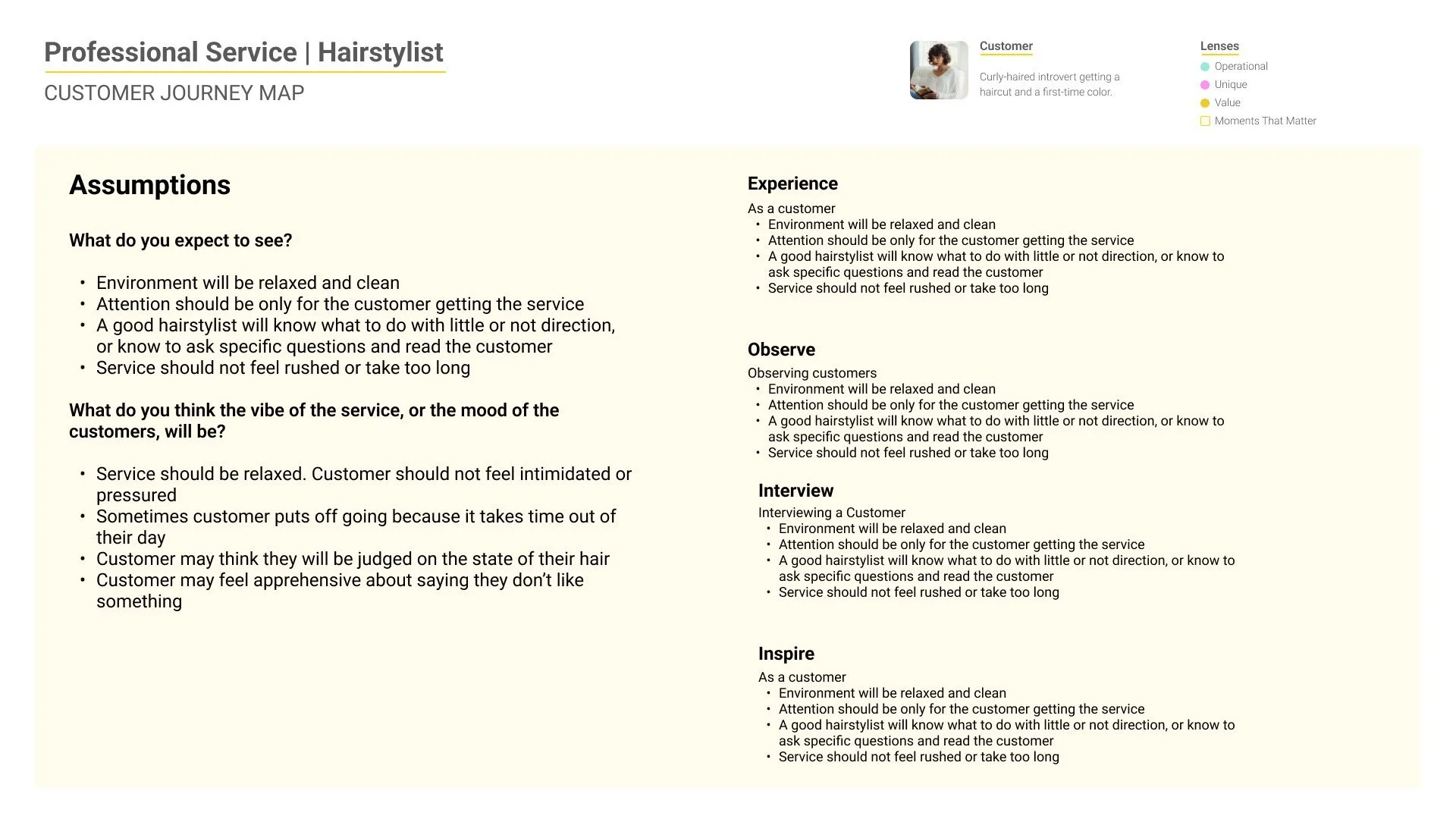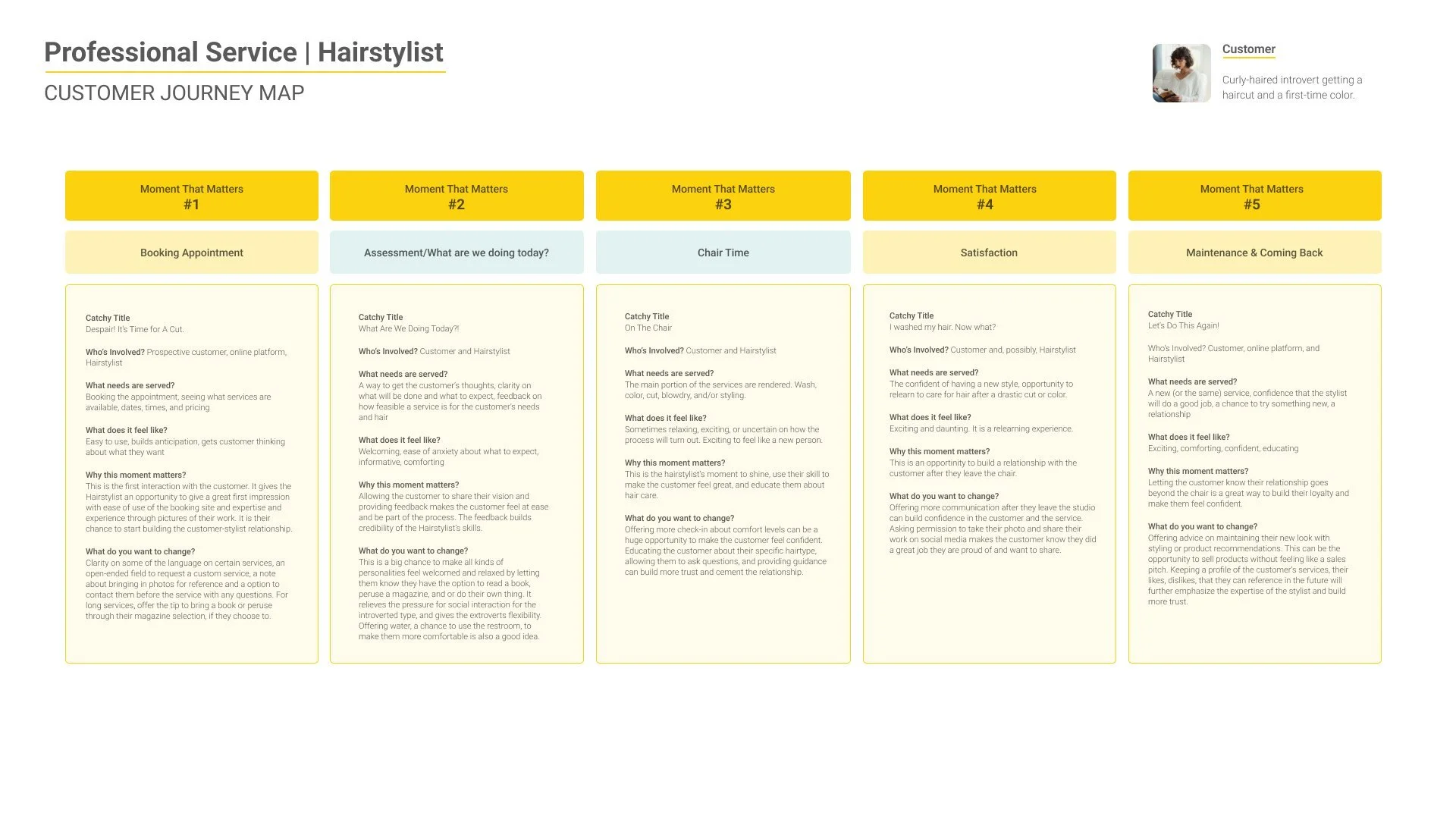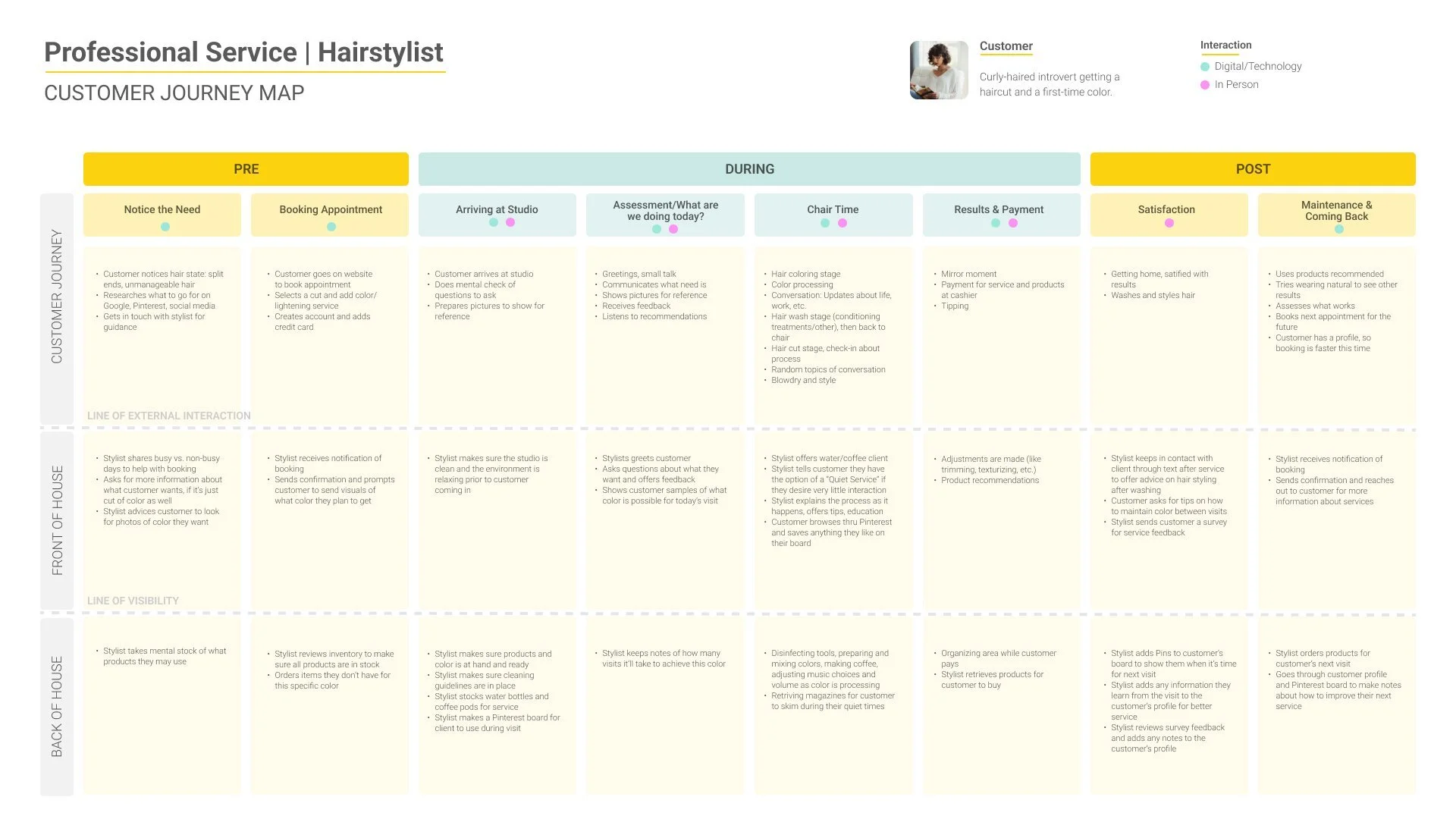Human-Centered Service Design
How might we redesign the hairstylist studio experience with the introverted customer in mind?
The Ideal Customer
The customer persona is a professional, introvert, low-maintenance, but willing to try new things. They value comfort, authenticity, transparency, empathy, and education about how to maintain the work the stylist has put into their hair in-between visits.
The Insights
This service experience could be improved overall, by focusing on the introverted customer as well. Services like color, intricate cuts, etc. require a lot of time with your hair professional and if the customer is not generally extroverted, it can become an uncomfortable experience they have to endure, as opposed to enjoy.
The Problem
It is an experience some people dread, even if the stylist provides a great service every time. The one thing that stands out, is that it appears that the standard of a good experience is built around the extroverted customer/client. Too often, the introverted customer leaves the chair unsure of how they feel about their experience and will postpone their next appointment for as long as it is humanly possible.
The Opportunity (or Solution)
It is a service you will always need and I want to design an experience that is comfortable and accommodating for all by providing options for a "Quiet Service" and level of comfort check-ins. I also want to implement educating the customer on their haircare in between visits. Providing the customer with options to engage or disengage from small talk or conversation that is not at their comfort level, by letting them know they can bring book, providing a magazine, or letting them use a customer iPad to browse hair inspiration. Sensory and environmental check-ins will also play a big part of the experience to ensure an optimal level of comfort.
Having options for the customer can really help with the overall experience if the customer is extroverted, introverted, or both.
Conclusion
After testing this in a real-life scenario with my own stylist, it has been well-received. The comfort check-ins are helpful to the customer and the stylist benefits through nurturing their relationship with the client. The “Quiet Service” is optional for all customers and it allows them to fully relax during their service without added pressure. There is a great opportunity to make the experience more inclusive with a bit of more nuance for people on the autism spectrum or other sensory processing issues.






